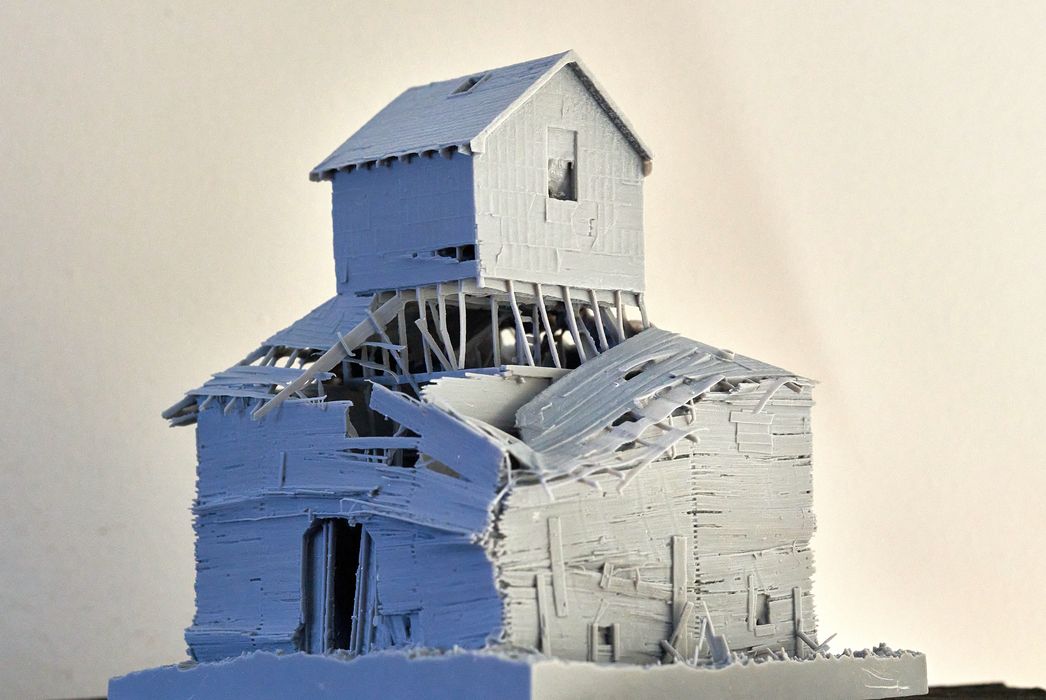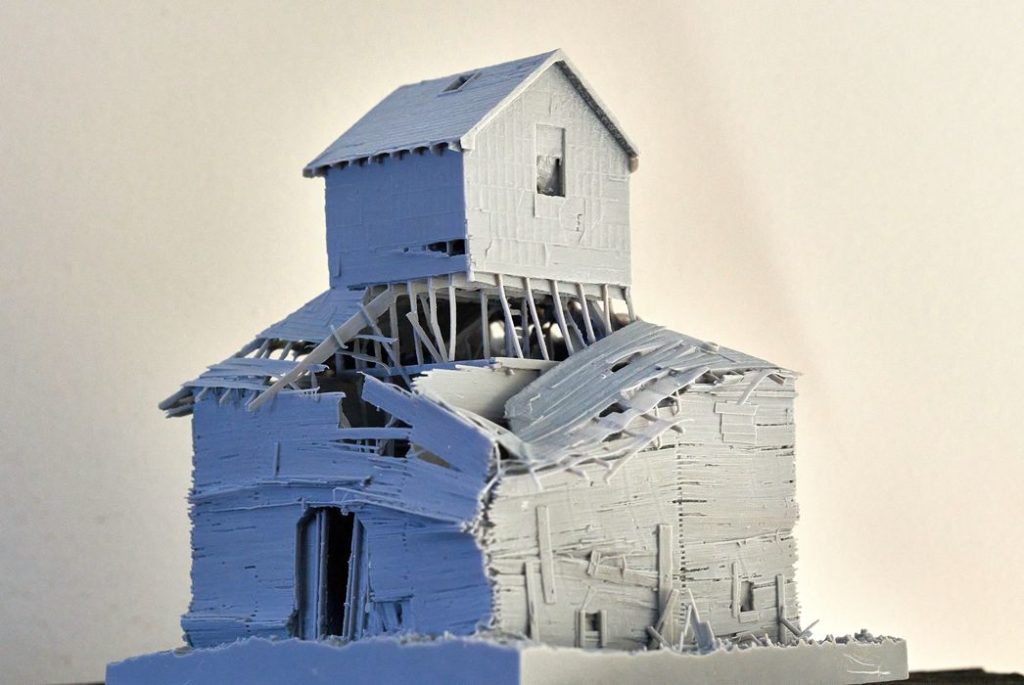
This week’s selection is the amazingly detailed 1890 Granary Print by scanning and modeling expert Patrick Letourneau.
Letourneau is a Canadian digital artist, specializing in 3D modeling and 3D scanning, and he has interest in capturing ghost town structures, like this rickety granary.
The granary was built on the Canadian prairies sometime in the 1890 time period, and unfortunately was demolished — for obvious reasons — shortly after Letourneau managed to capture it. Today, the only memory of this structure is the 3D print.
This is an extraordinary 3D print due to the astonishing and complex detail. I cannot imagine the work required to devise manual support structures to successfully print this model, yet Letourneau did just that.
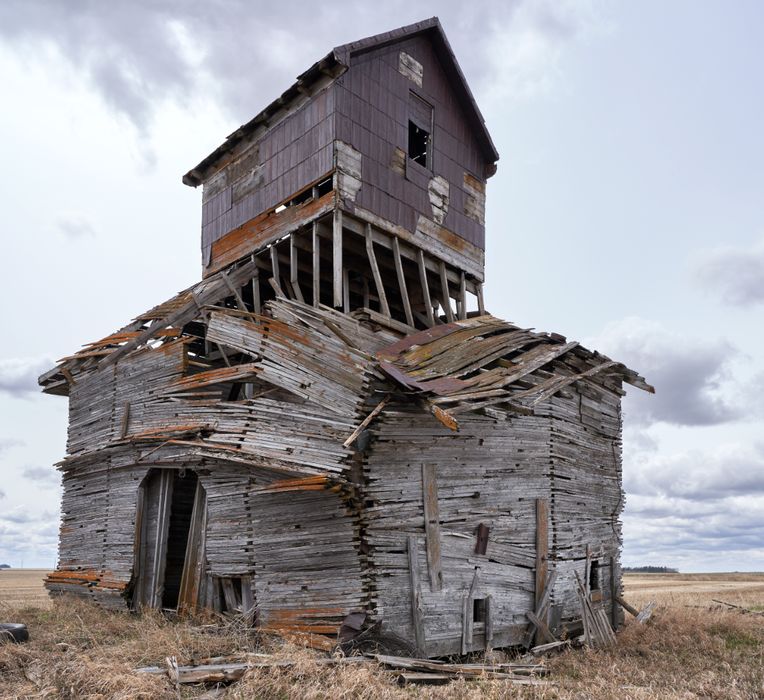
I asked Letourneau why he chose this subject for the scan and print:
“I’ve been scanning old agricultural structures for years, as their surface texture lends itself extremely well to photogrammetry. I learned about this structure, the Windsor Family elevator in Pembina Valley MB, through the Manitoba historical society. I knew it was collapsing and about to be demolished and made the trek out to scan it. We had to wait for a tiny window of cloud cover and rush a scan in – I only wish I could have captured it again a bit more thoroughly before it disappeared.”
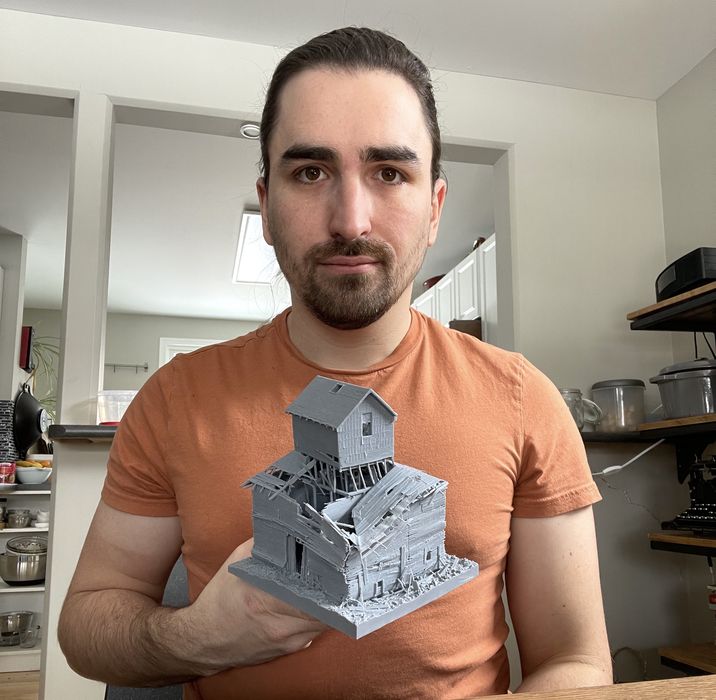
But how, exactly was this project executed? It turns out that Letourneau used a variety of easily obtainable tools to do so. Here is his process:
- Using a Sony a7R III full frame 32Mpx camera, he took around 200 images of the structure while slowly walking around it. This captured the exterior
- The camera on a DJI Phantom 4 Pro drone circuited the top of the granary to capture another ~150 images. This captured the top and interior
- The ~350 images were fed into RealityCapture, a popular 3D photogrammetry system, to develop a 3D model
- The 3D model was then repaired and made watertight manually by Letourneau using ZBrush’s Dynamesh feature
- Support structures were painstakingly devised in slicing software
- Printing on a Phrozen Sonic 8K MSLA resin 3D printer, taking 25 hours to complete
- Tediously removing all the support structures without managing to break any of the model
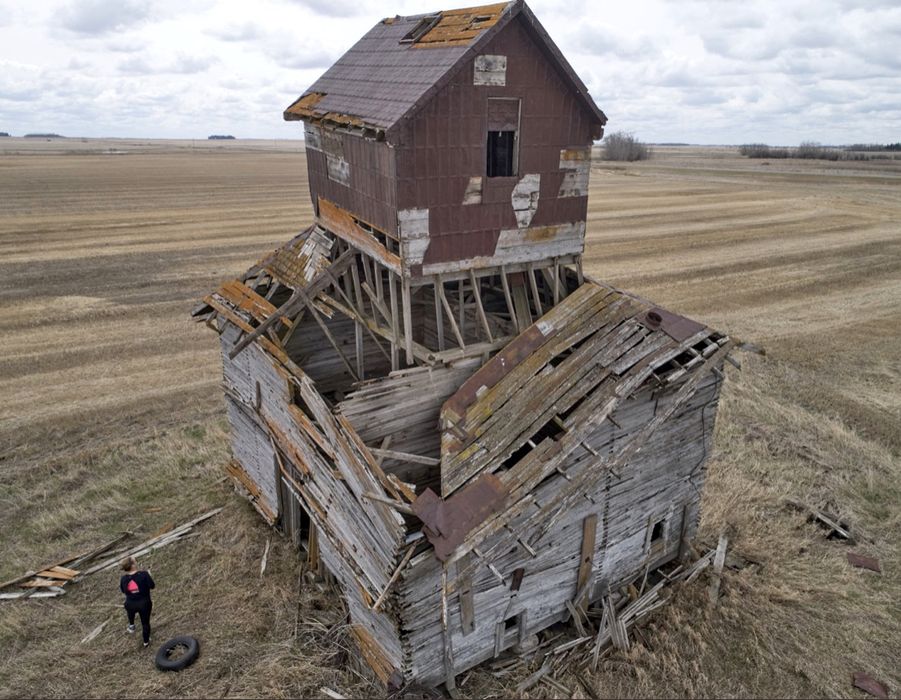
Letourneau explained that RealityCapture does most of the work, leaving the support structures as the major obstacle to completion:
“The cleanup was mostly just dynamesh to make things watertight, a bit of extra contrast in zbrush to make things pop, as well as trimming the ground. Not sure I’d even call it cleanup hehe. The hours were in manual support placement, oof.”
But how bad was the support structure problem, really?
“Supports were a huge pain point and took several hours to manually place. I still think I can get a better orientation for future prints and will likely have to repeat the process again.”
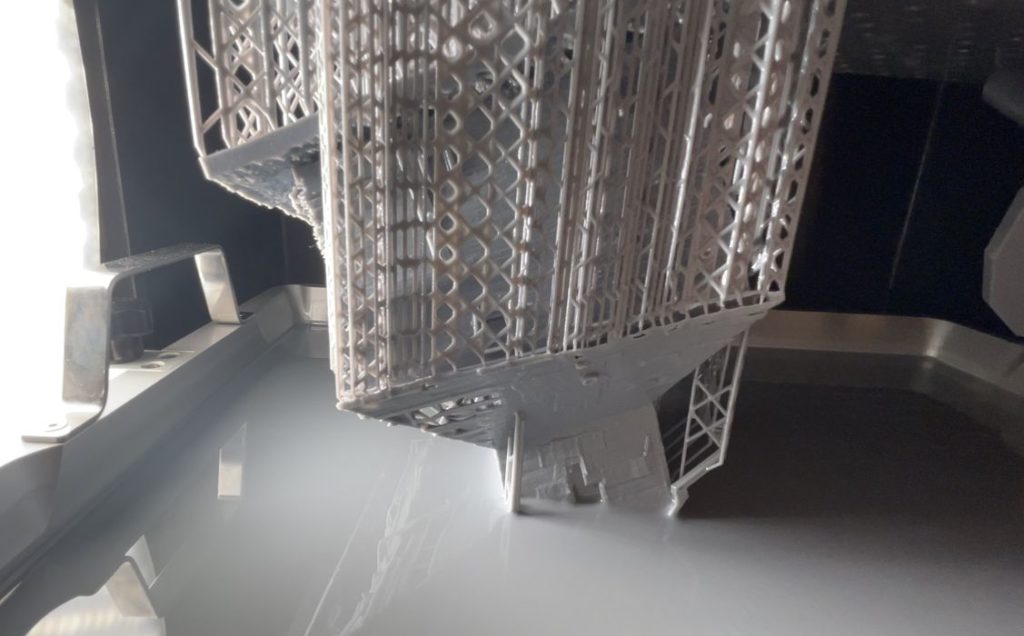
3D printing the granary took over 25 hours on Letourneau’s Phrozen Sonic 8K.
Check out the support complexity here:
However, he is expert in the use of RealityCapture, as he’s published tutorials for this on School of Motion’s YouTube channel:
Photogrammetry processing can take considerable time, and that was the case here. In order to process the 350 images in RealityCapture, Letourneau reports it took him a few hours on his dual NVIDIA 3090 configuration.
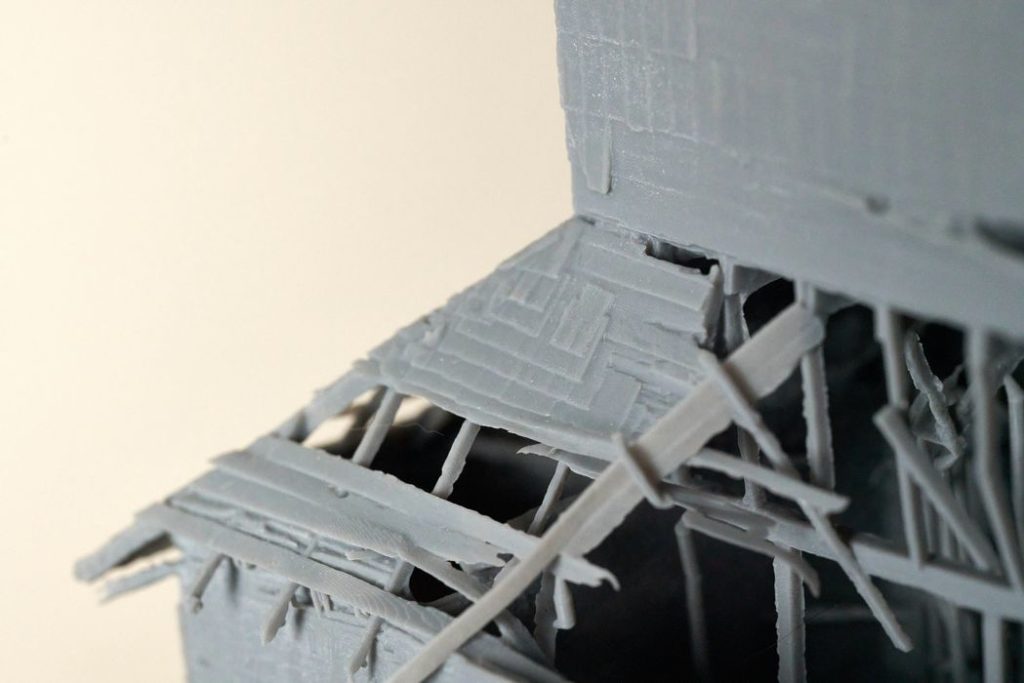
It appears that Letourneau is not offering the 3D model publicly, much to the consternation of model railway enthusiasts. However, I’d say that even if you had this 3D model, you’d be extremely challenged to obtain a successful 3D print unless you have the right equipment and experience.
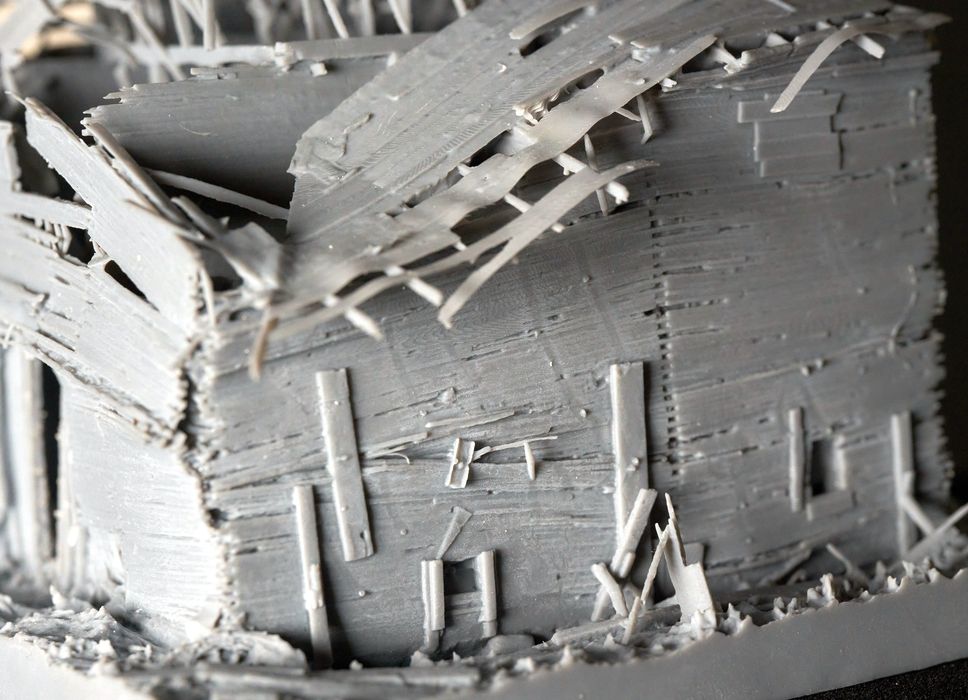
One more thing: this Granary no longer exists in physical reality, as it has been demolished. However, it lives on for eternity in digital form. This is something to keep in mind as you travel through the world: if you see something notable, consider making a 3D scan of it for posterity. Even if you don’t have the equipment or software to produce that 3D model, you can always capture the images and do the photogrammetry later when you do.

